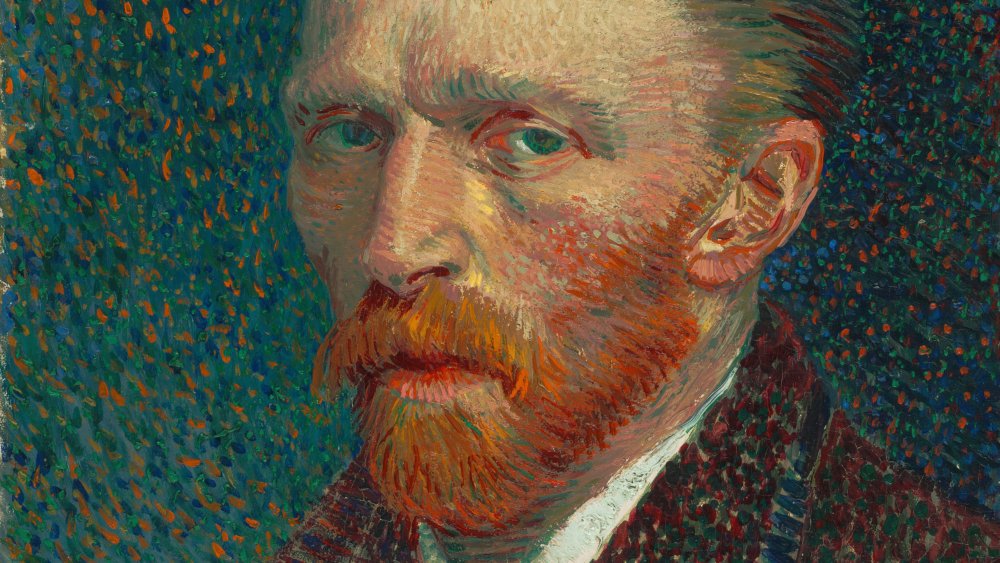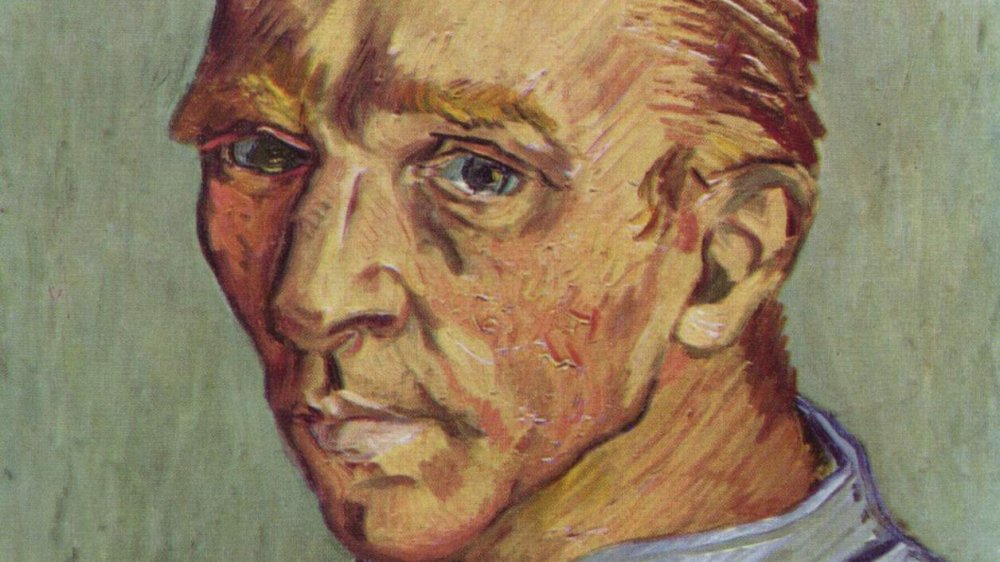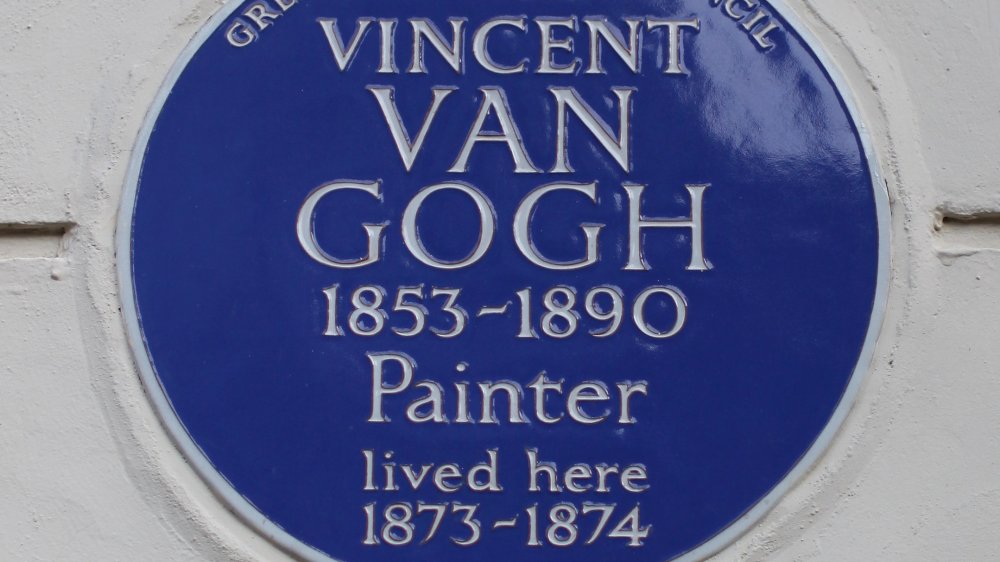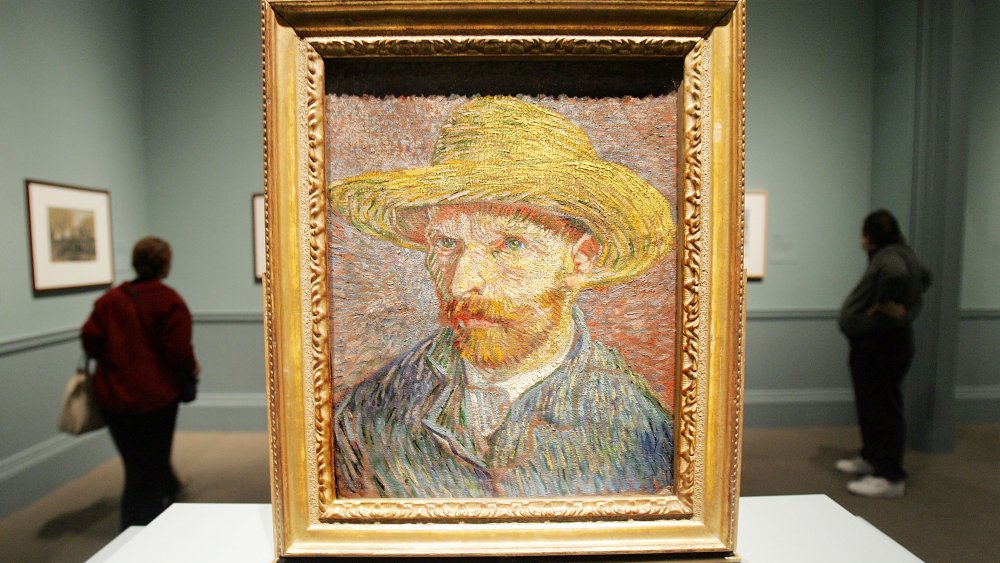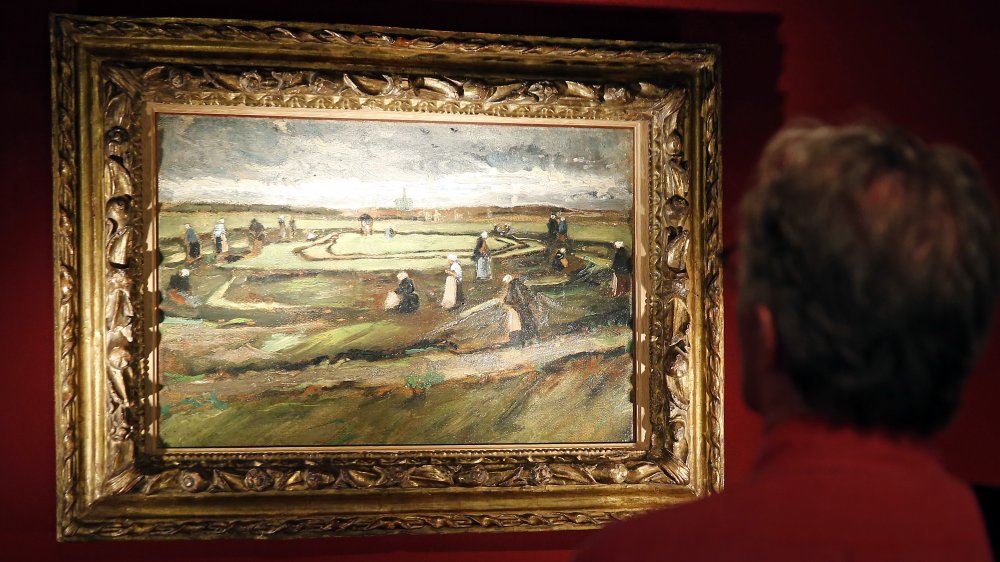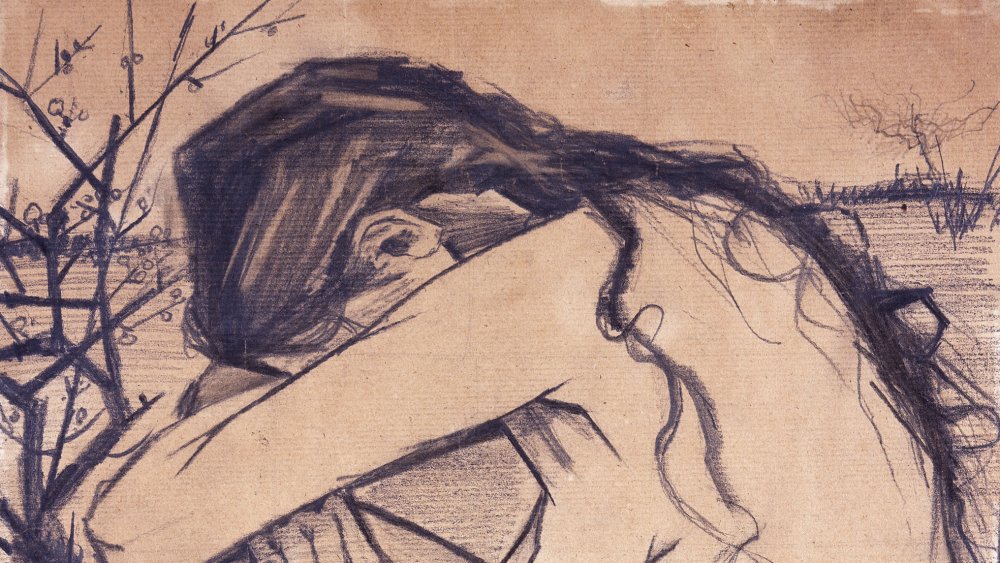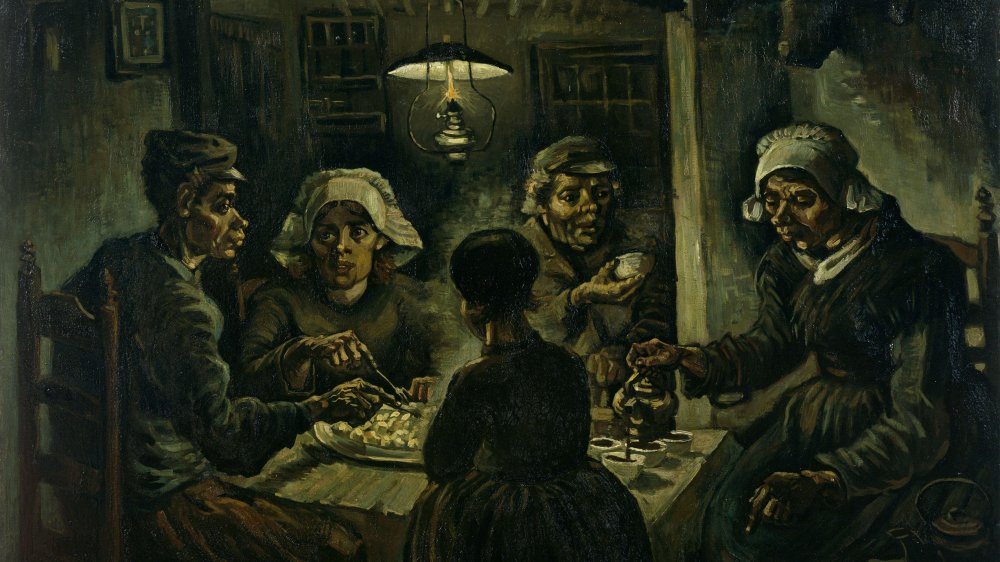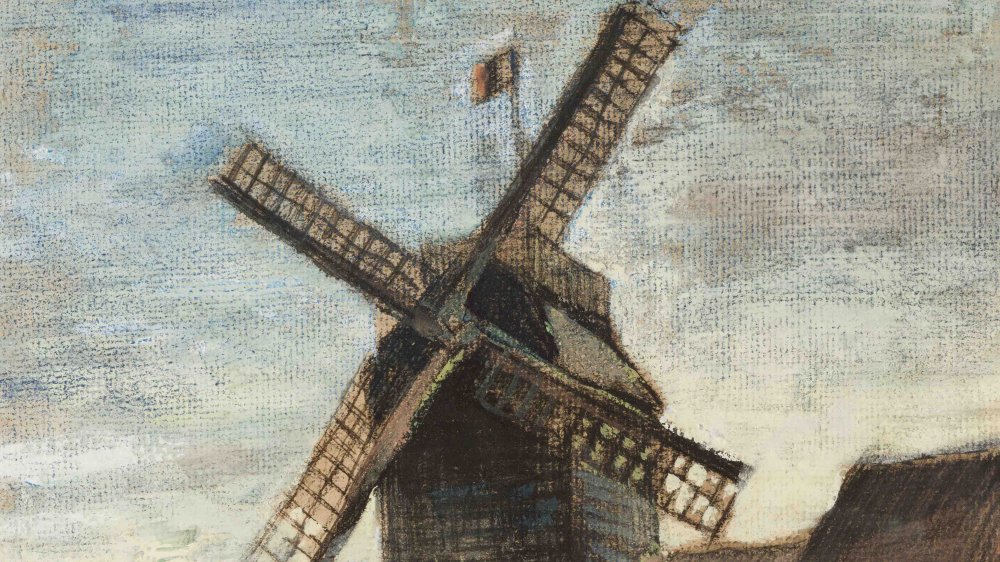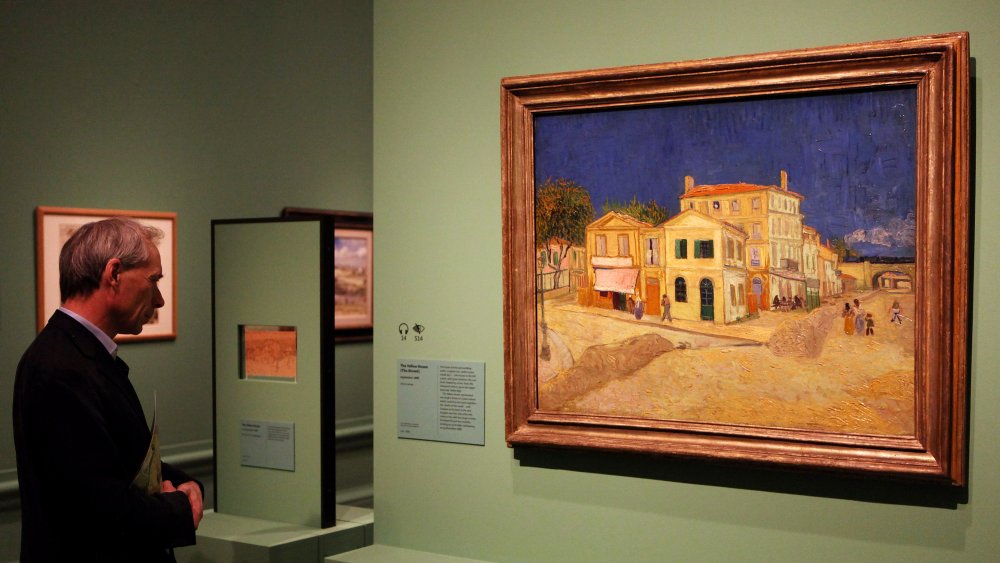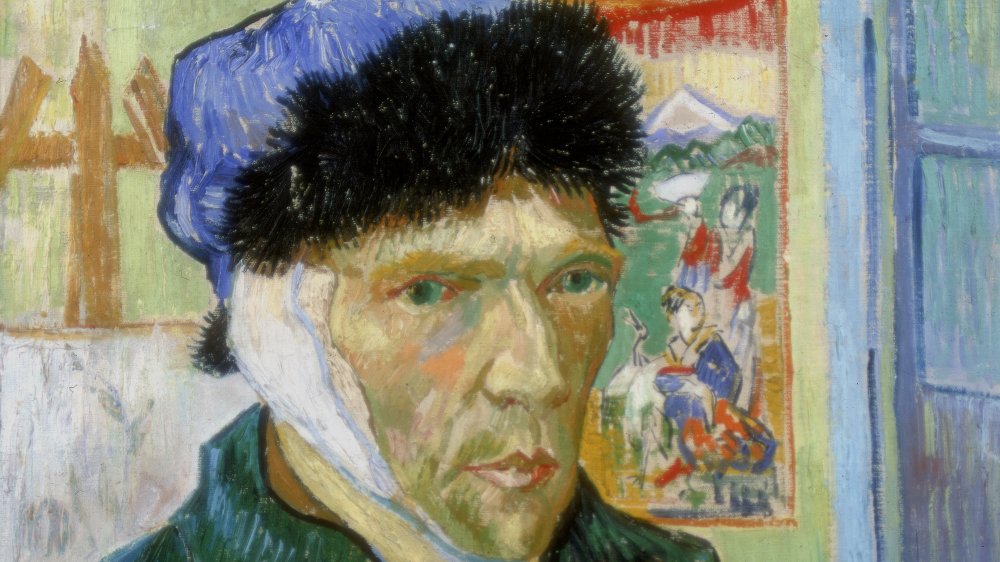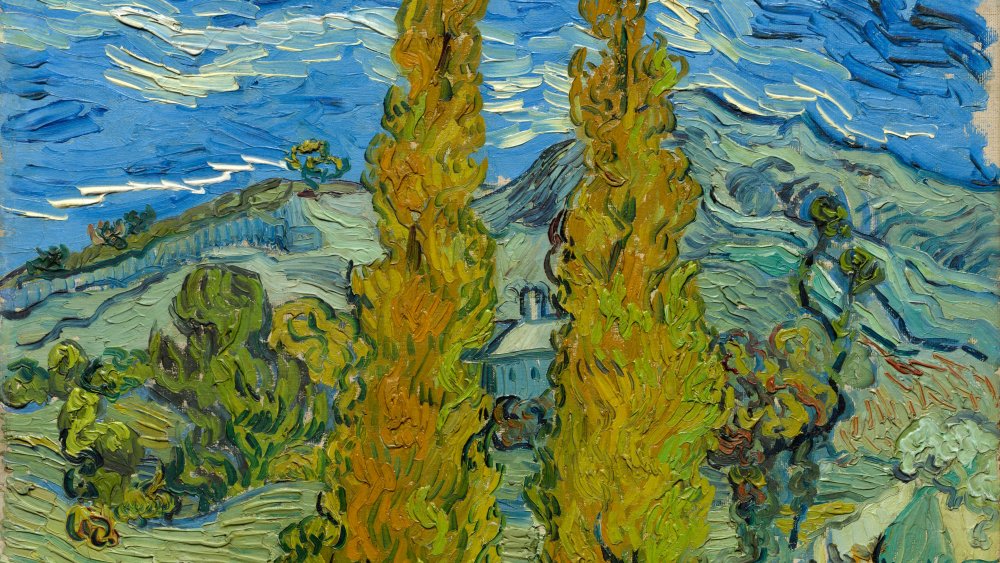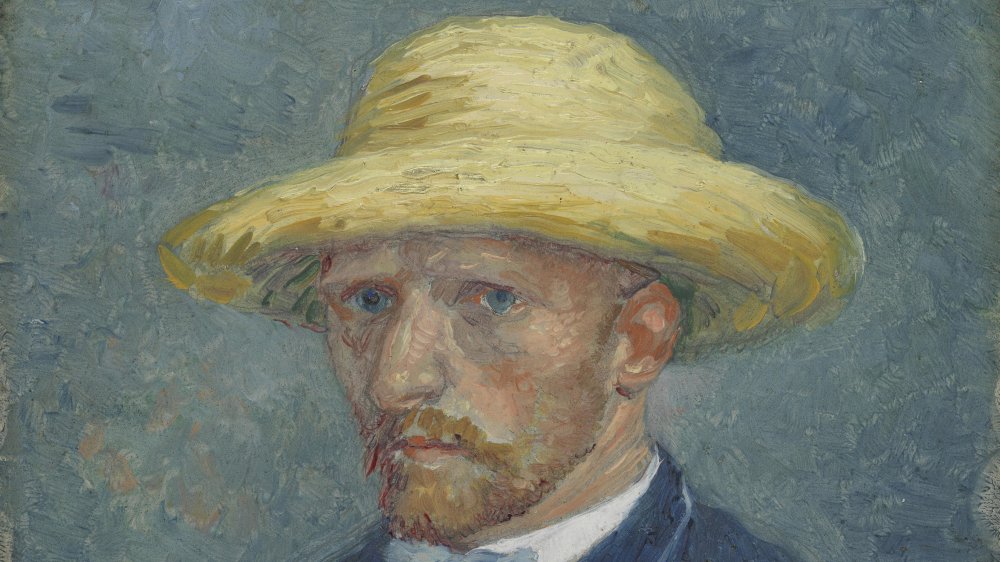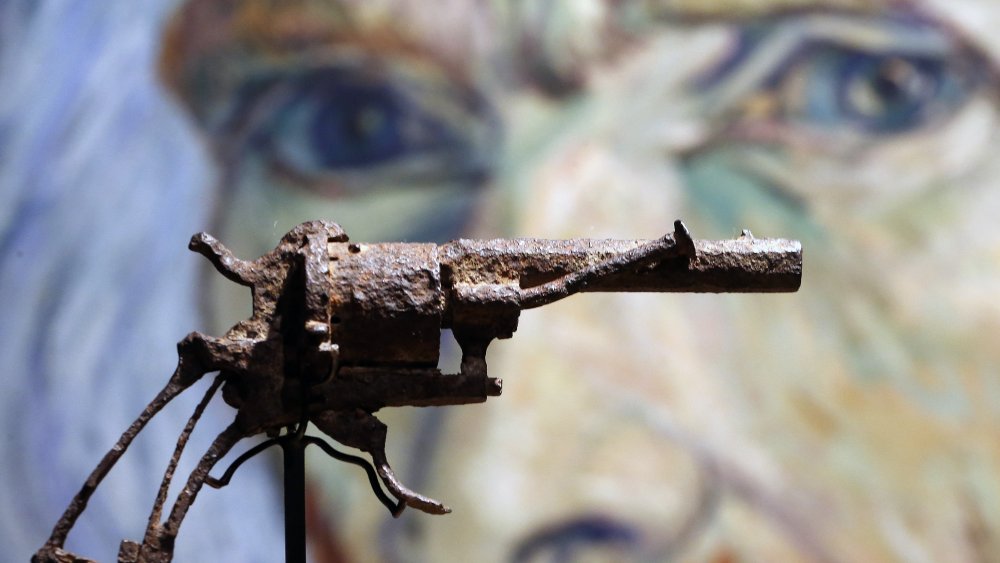The Tragic Real-Life Story Of Vincent Van Gogh
While Vincent Van Gogh is now one of the most popular and well-known Western painters in the world, he was mostly unknown in his lifetime, and his art was not successful. He struggled to find his place in the world, and it was mostly through the support of his brother, Theo Van Gogh, that Vincent was able to accomplish all that he did.
Vincent started off working at an art gallery, but it wasn't an ideal environment for him. He'd even discuss with customers whether or not art can be a commodity. His artistic vision gave him an eye that no one else had, though some say there's a medical explanation for his striking representations.
Despite his struggles with mental health issues, Vincent painted throughout his life, which came to a tragically short end when he committed suicide at the age of 37. Since then, his work has been exhibited worldwide. Some creatives have even addressed a posthumous appreciation to Vincent himself. This is the tragic real-life story of Vincent Van Gogh.
Born into memory
Vincent Van Gogh was born on March 30, 1853, in Groot-Zundert in the south of the Netherlands. He was born into a religious Dutch Reformed Church family, and his father, Theodorus van Gogh, worked as a clergyman. According to the Van Gogh Museum, Vincent was not the first child of Theodorus van Gogh and Anna Carbentus. Exactly one year earlier from the day of Vincent's birth, Anna had given birth to a stillborn son, whom they had also named Vincent. With the same name and birth date, Vincent forever bore the memory of his ghostly older brother.
Anna and Theodorus went on to have five more children; Elisabeth, Anna, Wil, Theo, and Cor. Vincent and Theo became incredibly close throughout Vincent's life, exchanging countless letters, and it was largely through Theo's urging that Vincent pursued his artistic endeavors.
Vincent transferred to a boarding school in Zevenbergen from his local village school when he was 11 years old, but he was exceedingly unhappy during his time there. When he was 13, he began his studies at a secondary school in Tilburg, but halfway through his second academic year in 1868, he quit, never to return to any form of formal schooling.
Van Gogh dips his toes into the art world
When Vincent Van Gogh was 16 years old, his uncle found him a job as a trainee for Goupil et Cie, a French art dealer. He worked at a gallery in The Hague for three years until Goupil transferred him to London in 1873 and then Paris by 1875. During this time, Vincent Van Gogh lost all interest in becoming a professional art dealer.
According to Van Gogh by Gregory White Smith and Steven Naifeh, Vincent was overwhelmed by the city of London and sought any reminder of country life. Finding refuge in the suburbs, Vincent found a boarding house in a neighborhood "so peaceful and pleasant that you almost forget you are in London." In order to make it to work on time from his suburban sanctuary, Vincent had to leave home at 6:30 every morning to catch the steamboat for an hour-long ride down the Thames.
It was also during this time that Vincent and Theo Van Gogh began their correspondence, and according to Artsy, some of their early letters show Vincent's brief enthusiasm for the art dealer's work. But Goupil et Cie felt little confidence in Vincent, and he was given his notice on January 1, 1876. In a letter to his brother, Vincent wrote, "I've certainly done things that were in some way very wrong, and so have little to say."
Van Gogh's brief turn to God
After Vincent was dismissed from Goupil et Cie, he went back to England. After a brief stint as an unpaid teacher in Ramsgate, he found a salaried job at a private school in Isleworth that was run by a vicar. Vincent Van Gogh spent a few months preaching at the school and in the nearby villages, but after spending Christmas 1876 with his family in Brabant, he decided not to return to England.
According to Van Gogh Route, Vincent instead arrived in Amsterdam in May 1877. Having become increasingly religious and with no concrete plan for his life, Vincent's parents conceded to helping him study theology. However, despite a strict schedule of lessons, Van Gogh found it difficult to concentrate on his studies, spending a great deal of his time walking around the city and visiting museums instead. His uncle Johannes Paulus Stricker, a minister in Amsterdam, advised him to give up on his studies since it was clear that he wasn't devoted to them. Vincent inevitably agreed, but still hoping to serve God, he went to Belgium and took up work as a lay preacher in the Borinage mining region.
Living among the miners, Vincent tried to establish a community of worshippers. Despite his dedication to his work, with the miners nicknaming him "The Christ of the Coal Mine," he was unsuccessful in establishing an effective congregation, and as a result, his work contract was not renewed.
Becoming an artist
In 1880, Vincent Van Gogh made the decision to pursue being an artist full-time. He often included illustrations and sketches in his letters to Theo, and Theo thought that Vincent should turn his focus toward his drawings. According to Artsy, Theo greatly encouraged Vincent and was instrumental in his brother's decision.
According to the Van Gogh Museum, while his parents were incredibly disappointed with his decision, they didn't seek to stop him. After briefly living in Brussels, Vincent moved back to live with his parents in the spring of 1881 while his brother supported him financially. But after an argument with his father on Christmas Day 1881, Vincent left his parents' house and moved to The Hague.
In The Hague, Vincent took some painting lessons from Anton Mauve, a cousin of his by marriage, practicing diligently and learning the basics of watercolors and oils. Despite these lessons, according to the Metropolitan Museum of Art, Vincent gained most of his artistic training by copying prints and studying drawing manuals. In 1882, Vincent received his first commission from his uncle, a series of 12 city view drawings of The Hague, which gave him a chance to work on his perspective skills. Vincent worked primarily in black and white during these early years, finding it necessary to master the two before moving into colors.
A short-lived love affair
While living in The Hague, Vincent Van Gogh met Sien Hoornik, and she became both his lover and his model. His parents and friends didn't approve of the relationship because of Hoornik's past as a sex worker and because she was already pregnant when she and Vincent met. But Vincent was already smitten. Even Theo didn't approve of the relationship, but nevertheless, he continued to support Vincent financially.
According to Artnet News, Hoornik and her daughter soon moved into Vincent's apartment in The Hague. It was there that she gave birth to a son whom she named Willem, after Vincent's middle name. During the 18 months that they were together, Vincent drew more than 50 sketches of Sien. But the disapprovals and their differences ended up being too great, and they decided to end the relationship.
In a letter to Theo in September 1883, Vincent wrote, "I knew from the outset that her character is a ruined character, but I had hopes of her finding her feet and now, precisely when I don't see her any more and think about the things I saw in her, I increasingly come to realize that she was already too far gone to find her feet." While they were living together, Hoornik had said to Van Gogh that she'd become a prostitute out of convenience and that "it's bound to end up with me jumping in the water." She fulfilled her premonition in 1904, when she drowned herself in the Schelde River.
If you or anyone you know is having suicidal thoughts, please call the National Suicide Prevention Lifeline at 1-800-273-TALK (8255).
The dark peasant years
Vincent Van Gogh traveled to Drenthe to paint the countryside after he and Sien split up. While he enjoyed the province, he wrote to his brother that "staying there depends on many things — depends on whether one has the money for it, depends on whether one can endure the loneliness." Theo continued to financially support his brother, but less than three months later, the loneliness got to him, and Vincent returned to his parents' home in Nuenen in December 1883.
According to the Van Gogh Museum, Vincent initially worked out of a small studio in the back of his parents' house, but within a few months, he'd rented a bigger space in the village. As Vincent started sketching and painting the rural workers in Nuenen, he suggested to Theo on January 15, 1884, that in exchange for the allowance he received, "Let me send you my work and you take what you want from it, but I insist that I may consider the money I would receive from you after March as money I've earned. And I don't mind at all if it's not as much at first as I've been receiving up to now."
During this time, Vincent painted his famous work The Potato Eaters as he tried to portray naturally existing human figures. But the painting was underappreciated in his time, and Theo was unable to sell Vincent's works, which favored darker tones, in the colorful Parisian art market.
Van Gogh's two years in Paris
Vincent Van Gogh left Nuenen in 1885 and traveled to Antwerp, where he attended drawing classes that he considered far too traditional. Vincent had no desire to stay in the city and started making plans with Theo to join him in Paris. According to the Van Gogh Museum, Theo had hardly begun to look for an apartment for Vincent when he announced that he'd arrived in Paris on February 28, 1886.
According to the Metropolitan Museum of Art, Vincent's style transformed during his two years in Paris. Exposed to the works of Impressionists and Neo-Impressionists, Vincent started using lighter colors and experimenting with his brushstrokes. In Paris, Vincent also widened his artist circle, making the acquaintance of Claude Monet, Camille Pissarro, Emile Bernard, and Paul Gauguin.
In Paris, Vincent also discovered Japanese woodcuts, which were sold frequently in the Paris markets. Vincent and Theo started to collect different Japanese woodcuts, and these woodcuts served as inspirations for many different pieces by Vincent, such as The Flowering Orchard and Bridge in the Rain (after Hiroshige).
Van Gogh moves to the south of France
After two years in Paris, Vincent Van Gogh arrived in Arles, a small town in the south of France, on February 20, 1888, hoping to find peace in the countryside. The next day, he wrote to Theo that it seemed "almost impossible to be able to work in Paris, unless you have a refuge in which to recover and regain your peace of mind and self-composure."
According to the Vincent Van Gogh Gallery, Vincent fell in love with the local landscape and wanted to create an artists' colony. Vincent rented part of a yellow building on Place Lamartine, initially using it just as a studio and later moving into the space, and began calling it the Yellow House.
Vincent wanted the house to be the centerpiece of his art colony, where artists could work and live together. He created several paintings to decorate the house with, such as The Tarascon Stagecoach, The Night Café, and The Yellow House ("The Street"). Vincent's celebrated series of Sunflowers was also created for the Yellow House.
Gauguin's visit and Van Gogh's ear
Vincent desperately sought to get his artist friends to join him in Arles and to start an artists' colony, but Paul Gauguin was the first and last friend to take Vincent up on his offer. And it took a lot of convincing, to the point where Theo had to agree to pay for Gauguin's travel expenses in order to persuade him.
According to Van Gogh Route, Gauguin arrived on October 23, 1888, and although the two artists got along at first, their personalities and ideas about art were too incompatible. Vincent wrote to Theo, "Gauguin and I talk a lot about Delacroix, Rembrandt &c. The discussion is excessively electric. We sometimes emerge from it with tired minds, like an electric battery after it's run down."
Van Gogh and Gauguin clashed repeatedly, and when Gauguin threatened to leave on December 23, 1888, Vincent in turn threatened him with a razor. According to The Art Newspaper, Gauguin fled to a hotel, and in a fit, Vincent cut his own ear with the razor. It was this slashed piece of ear that became legend when Vincent wrapped it and took to a prostitute in the red-light district. Gauguin saw him briefly the next morning before Vincent was taken to the hospital, and on Christmas, Gauguin returned to Paris.
Van Gogh voluntarily committed himself
Vincent stayed in the hospital due to his ear incident until early January 1889. After being discharged, he went back to painting, but his mental instability led him to voluntarily admit himself to Saint-Paul-de-Mausole psychiatric hospital in May.
According to the Metropolitan Museum of Art, during his year there, Vincent painted over 150 pieces. In addition to making copies of works by artists like Rembrandt, he also created what he called "translations" of Millet's paintings. His imagery reflected his own surroundings, whether through the flowers of the hospital's walled garden or the corridors of the building. According to the Van Gogh Museum, despite Vincent's productivity, his mental health continued to be unstable. After one incident involving Vincent eating his oil paints, he was only allowed drawing instruments for a while.
During this time, Vincent's paintings were shown at a group exhibition in Brussels. It was during this show that Vincent's painting, The Red Vineyard, was sold. While Vincent sold various small pieces throughout his life, this was his largest sale. Anna Boch, a painter and patron of the arts, paid 400 Francs (roughly $1,600 today) for a painting that is now worth over $100 million. According to Theo, the response to Vincent's paintings was quite positive, writing to Vincent on March 19, 1890, "Your paintings are well placed and look very well. Many people came up to ask me to give you their compliments. Gauguin said that your paintings are the key to the exhibition."
The closeness of brothers
Theo and Vincent remained close throughout their entire lives, and despite the fact that Vincent was the elder, Theo took on the position of protective older brother. Vincent and Theo wrote to each other throughout their lives, and while only roughly 650 letters between them exist today, their correspondence informs a great deal of what we know about Vincent's life. The two brothers even lived together at one point in Paris, though Theo felt that his brother was always either one of two people, "one marvellously gifted, refined and gentle, and the other selfish and unfeeling."
Theo (depicted above) offered Vincent mental support as well as financial support, neither one of which Vincent could've gone without. It's estimated that between 1880 and 1890, Theo gave Vincent a minimum of 17,500 Francs, though there's no way to know about all the various payments.
According to the Van Gogh Museum, after being discharged from the psychiatric hospital, Vincent went to live in Auvers-sur-Oise in the suburbs of Paris. This allowed him to be close to the countryside and to his brother. Vincent devoted himself to painting, working feverishly to portray his surroundings.
Van Gogh's final worries and final days
When Vincent visited Theo in early July 1890, he learned that Theo was thinking of leaving the art dealers to set up his own art firm. Theo would be taking a financial risk, and this didn't bode well for Vincent's financial insecurity. Despite Theo's reassurances, Vincent was increasingly worried about his financial state, in addition to his mental health concerns. Vincent returned to Auvers-sur-Oise wracked with uncertainty over his future.
On July 27, Vincent shot himself in the chest in a wheat field. According to the Van Gogh Museum, he made it back to his room at the Auberge Ravoux, where he would die two days later from his injuries. After hearing of his brother's attempted suicide, Theo rushed to Auvers-sur-Oise and was at Vincent's side when he died.
Shortly after Vincent's death, Theo organized an exhibit of his work, but his own mental health was faltering. After the exhibition, Theo immediately resigned from his work and was admitted into a clinic in Utrecht after a mental health episode of his own. Theo died just six months after Vincent from two epileptic incidents, most likely due to dementia paralytica or a syphilis-related syndrome. Theo's widow, Jo van Gogh, ended up being the one who raised public awareness of Vincent's work. Making exhibition loans to museums around the world, Jo made Vincent's art what it's known to be today. She was also the one who kept Vincent and Theo's letters, publishing them in a book in 1914.
If you or anyone you know is having suicidal thoughts, please call the National Suicide Prevention Lifeline at 1-800-273-TALK (8255).
